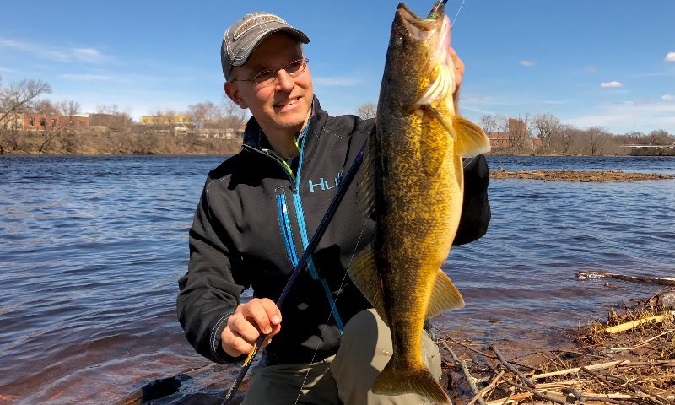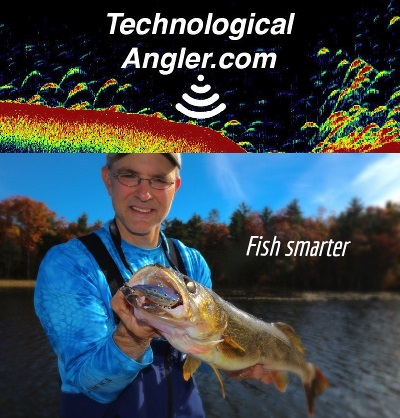Let’s face the facts: nearly everyone gets their start in fishing by casting a line from shore. These outings find us anxious to tangle with “whatever bites” and happy to steal a few moments near the water to wash away life’s trials and tribulations.

The simplicity of angling from the shore is counterbalanced by the inherent limitations that accompany such trips: fishing locations are restricted to those places where we can legally access the shoreline, and our ability to probe the nooks and crannies of subsurface structure is limited by the distance covered by our longest casts. Even in the face of these obstacles, shore fishing continues to enjoy a special part in the repertoire of many sportsmen, ranging from the relative novice to the most seasoned and experienced angler. Here are five proven tips that will help bring more success to your shoreline fishing experiences.
Go Long. One of the most important tools for the shore-bound angler is a long rod. Certainly no secret to veterans of the Euro-carp scene, where rods up to 13 feet in length are commonplace, long rods provide significant advantages to multispecies anglers patrolling the shoreline. First, such rods allow anglers to avoid entanglements with imposing shoreline reeds and willows, where the rod’s length can elevate baits above those obstacles during the cast, and can also keep the angler’s line above that same cover during the retrieve. Second, long rods provide the leverage necessary to bring hooked fish quickly to shore, keeping them away from near-shore snags that could lead to loss of the “fish of the day”.
When chasing walleyes, bass and panfish, my favorite shorefishing rod is the 7-foot, 6-inch St. Croix Legend Tournament Walleye Series (LTWS76MLXF). This rod provides the length needed to avoid shoreline cover and to make long casts; the sensitivity I to detect subtle bites from wary walleyes; and the right balance of power to dominate larger fish, while still allowing scrappy battles with crappies and perch.
When whiskered fish, like catfish or sturgeon, are on the menu, I select a beefy St. Croix Mojo Cat (MCS80MF2). This 8-foot rod features a unique, powerful blend of SCII graphite and linear S-glass that can easily muscle the orneriest cat to shore.
Watch your line. Productive shoreline fishing areas don’t often occur as a sugar-sand beach, where barefoot anglers might frolic between bites. Rather, prime areas to target lunkers from shore are often tough to reach, and tougher to fish from, because of hazardous rocks, thick brush or downed trees, or manmade cover like docks or boathouses assembled from wood and metal. Casting, retrieving, and fighting fish near these abrasive objects can have dramatic, negative impacts on your line, often leading to line failure and the loss of a prize catch.
To avoid this heartbreak, choose a line that is tough enough for any shoreline application, like Seaguar AbrazX. A 100% fluorocarbon line fortified with advanced abrasion resistance, Seaguar AbrazX is designed to defeat the line-weakening effects of heavy cover, while remaining extremely soft for long casts and ease of handling. Perfect for walleyes hiding in the rocks and catfish tucked into timber, Seaguar AbrazX was also the line of choice for Jordan Lee, who relied on this abrasion-resistant fluorocarbon on his way to the 2017 Bassmaster Classic Championship.
Check your jig. One of the simplest, yet most effective ways to target fish from shore is with a jig. By selecting jigs of different weights, we can present a wide variety of both live and artificial baits through any portion in the water column. Indeed, a light jig can be dangled beneath a bobber or retrieved close to the surface. Choose a heavier jig to work the mid-range depths or to bounce a bait along the bottom.
Tackle shops are replete with jigs in a dizzying array of designs, shapes and sizes. One refinement that makes a big difference, especially when fishing in current, is the use of tungsten jigs. Well established in the ice fishing scene, tungsten is a non-toxic substitute for the traditional leadhead, and because of tungsten’s high density, tungsten jigs will be smaller than lead jigs of the same weight. In current, a small-profile tungsten jig allows the angler to probe the depths of moving water while offering less resistance to current, which keeps the tungsten jig within the strike zone longer. Fiskas XL Walleye Series jigs are hand-painted tungsten jigs designed specifically for open water use, and are excellent choices when chasing spring walleyes from shore, particularly when tipped with live bait. When presenting bulkier soft plastics, choose a premium lead jig with a wider-gap hook and a wire plastic-keeper, like the B-Fish-N Tackle Precision Jig.
 Keep fish nearby. While shore-bound anglers generally have limited mobility, the fish they are chasing enjoy complete freedom of movement. Active fish patrolling a stretch of shoreline, or hopping among pieces of near-shore cover, might be within reach of an angler casting from shore for only a small fraction of that angler’s total fishing time. Where legal, BaitCloud is a unique product that will help to bring the fish to your location, and keep them there while you present baits to them. BaitCloud works by combining scent, sound, and visual attractants into a single, easy-to-use, biodegradable product that is proven to attract fish. Available in a variety of formulations, including specific recipes for bass, walleye, or panfish, BaitCloud can tip the scales in the shoreline angler’s favor, especially when used in a lake or other area with minimal current.
Keep fish nearby. While shore-bound anglers generally have limited mobility, the fish they are chasing enjoy complete freedom of movement. Active fish patrolling a stretch of shoreline, or hopping among pieces of near-shore cover, might be within reach of an angler casting from shore for only a small fraction of that angler’s total fishing time. Where legal, BaitCloud is a unique product that will help to bring the fish to your location, and keep them there while you present baits to them. BaitCloud works by combining scent, sound, and visual attractants into a single, easy-to-use, biodegradable product that is proven to attract fish. Available in a variety of formulations, including specific recipes for bass, walleye, or panfish, BaitCloud can tip the scales in the shoreline angler’s favor, especially when used in a lake or other area with minimal current.
Travel light. One way to enhance your mobility when fishing from shore is to carry only a minimalistic set of equipment. The less stuff that you have to pack and move, the more often you will switch spots; just like fishing from a boat or through the ice, angler mobility is truly the key to success.
I carry a limited selection of basic tools and tackle, jigs and baits, extra line and maybe even an old-school stringer, all packed within a Plano Zipperless Z-Series Tackle Bag. Featuring plenty of room for my shore-fishing equipment and a convenient shoulder strap for ease of transport,  my Plano Z-Series Tackle Bag has a durable, water-resistant coating and splash-resistant openings to keep my tools and tackle dry, no matter where my shoreline travels take me, or how rainy (or snowy!) a fishing day might become.
my Plano Z-Series Tackle Bag has a durable, water-resistant coating and splash-resistant openings to keep my tools and tackle dry, no matter where my shoreline travels take me, or how rainy (or snowy!) a fishing day might become.
Fishing from shore is a great way to reconnect with your angling roots, and to introduce a youngster to our sport. These five tips will help keep smiles on faces and rods bent with consistency, no matter which species of fish you pursue from the shoreline.
About the author: Dr. Jason Halfen owns and operates The Technological Angler, a company dedicated to teaching anglers to leverage modern technology to find and catch more and bigger fish. Learn more at www.technologicalangler.com .
